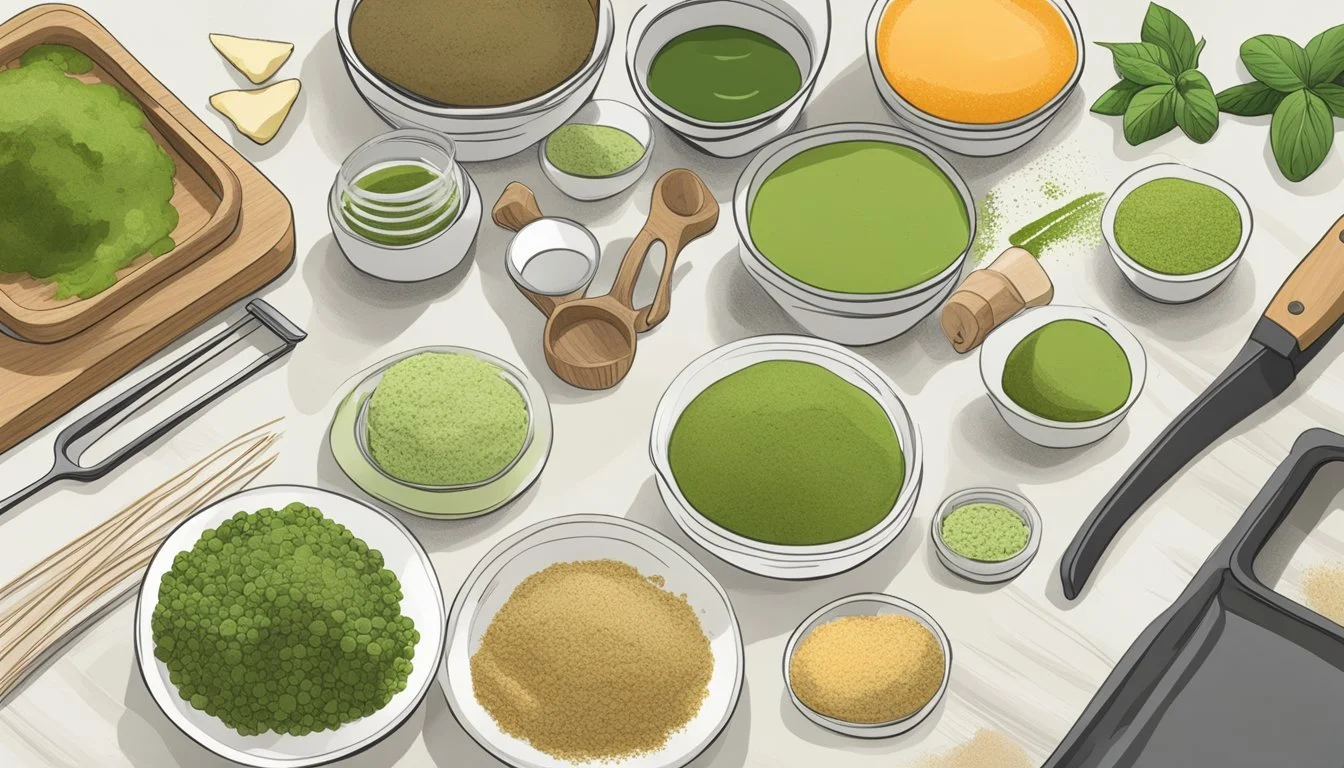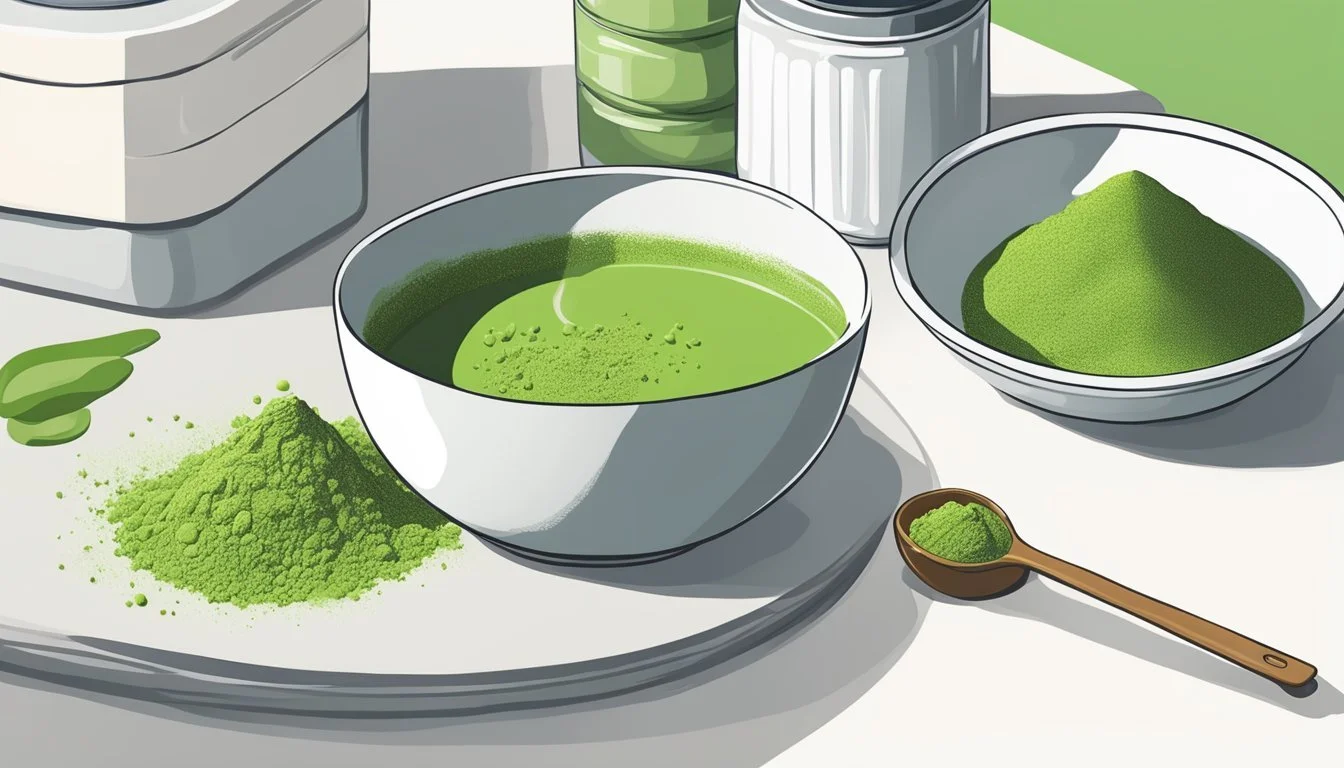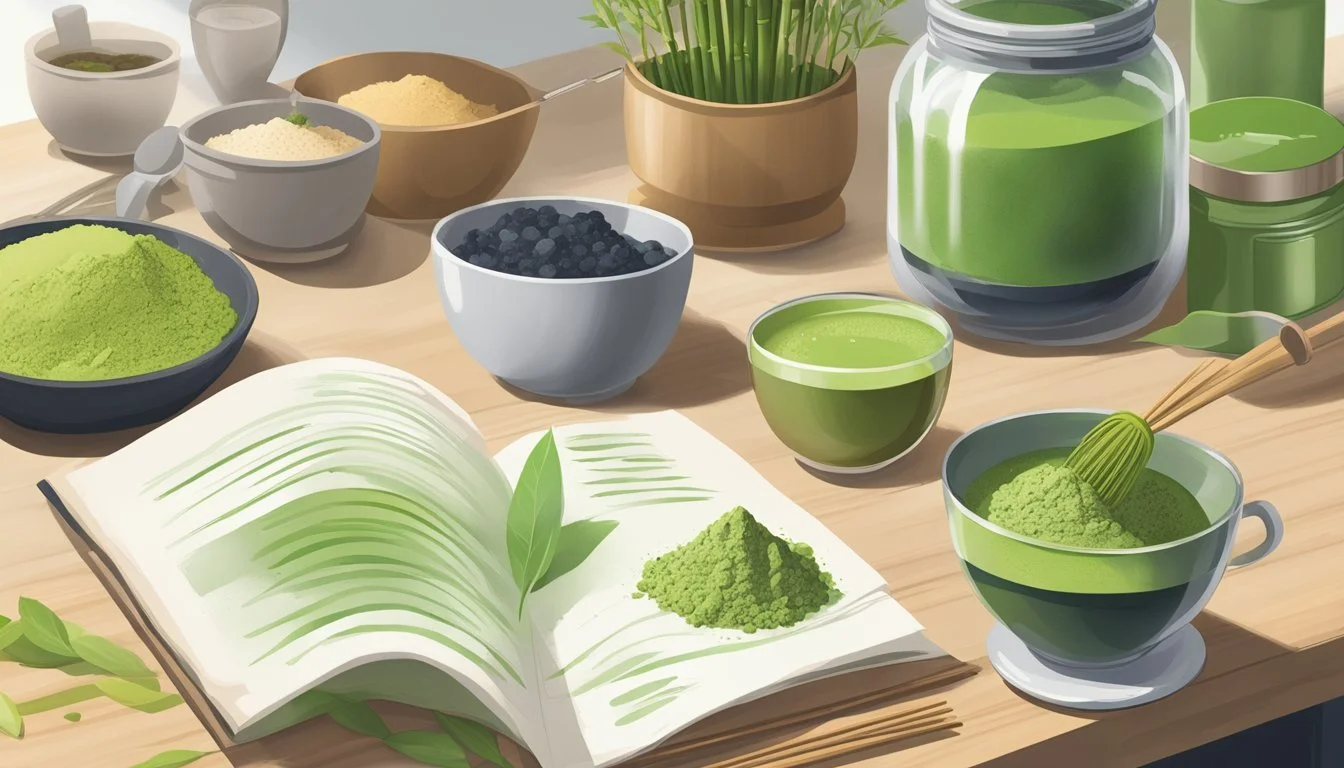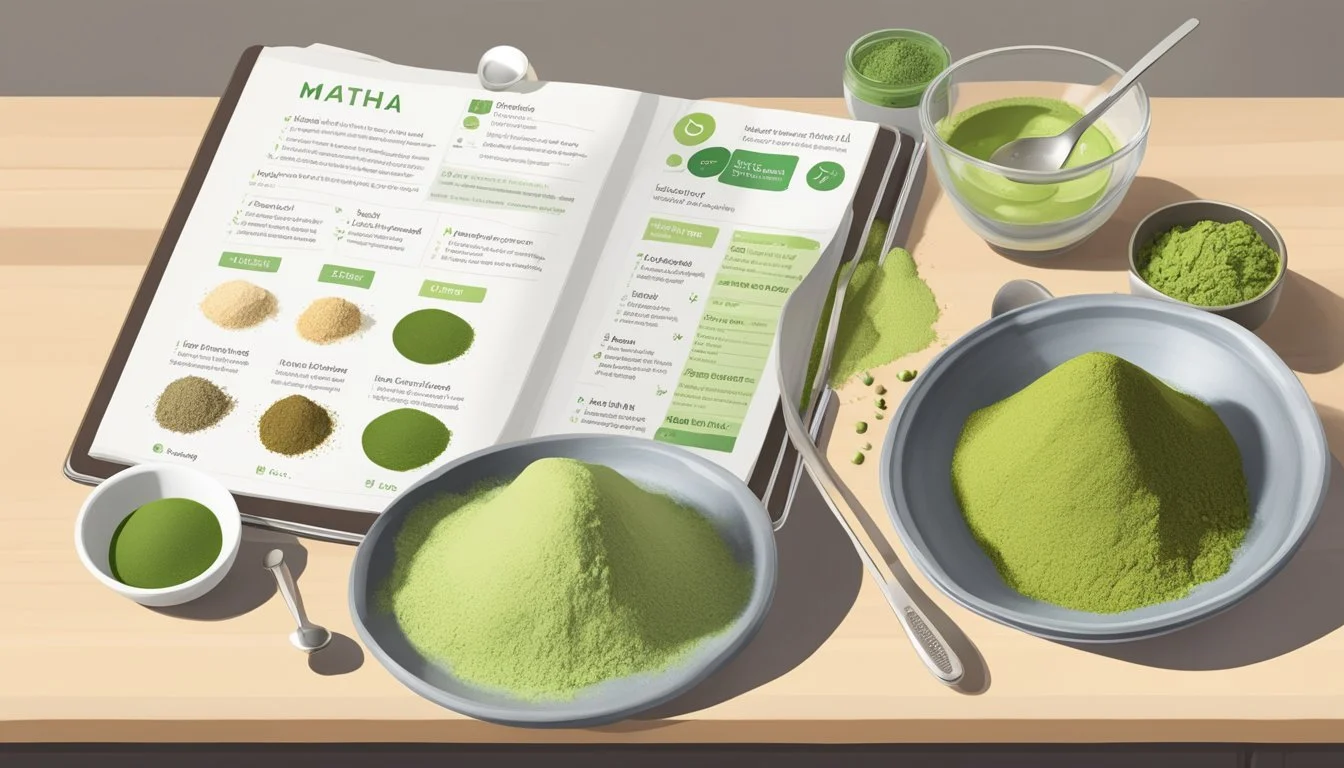5 Meal Prep Recipes Using Matcha Powder
Quick and Healthy Ideas
Matcha powder is a versatile ingredient that continues to gain popularity for its range of health benefits and distinct, earthy flavor. Made from finely ground green tea leaves, matcha lends its rich color and antioxidants to an array of recipes. From innovative breakfast options to energizing snacks, matcha powder can be easily incorporated into meal prep routines, offering a nutritious boost to everyday eating habits.
Meal prepping with matcha opens up a world of culinary creativity while contributing to a wholesome diet. The recipes that embrace matcha vary widely, each giving a nod to the unique taste and nutritional profile of this green tea powerhouse. Whether blended into smoothies, stirred into baked goods, or sprinkled over savory dishes, matcha infuses meals with a subtle depth of flavor and an abundance of health-promoting ingredients.
These meal prep recipes are carefully crafted to showcase the adaptability of matcha. They demonstrate how a single, healthful ingredient can transform the most basic components into a meal that is both enjoyable and beneficial. Every recipe is designed to be straightforward and practical, catering to busy lifestyles without compromising on taste and nutritional value.
Benefits of Matcha in Meal Prepping
Matcha powder adds a nutrient-rich boost and convenience to meal prepping routines. Recognized both for its health properties and adaptability in various recipes, matcha transforms ordinary meals into revitalized, energy-sustaining options.
Health Advantages of Matcha
Matcha, a finely ground green tea powder, is celebrated for high levels of antioxidants, specifically catechins, which contribute to cellular protection. Loaded with these antioxidants, meals prepped with matcha can offer increased defense against oxidative stress. Further, matcha contains L-theanine, an amino acid that promotes relaxation and mental alertness, offering a balanced energy lift without the jitters typically associated with caffeine. These attributes make matcha an exceptional addition to the meal prep arsenal, particularly for individuals seeking cognitive support and improved health outcomes.
Matcha also comes in different grades. Ceremonial grade is intended for drinking and carries a delicate taste, while the culinary grade is suitable for cooking and baking, offering versatility in meal prep. Including matcha in meals, therefore, not only adds a special flavor profile but also provides a substantial nutritional component, namely dietary fiber, which is beneficial for digestive health.
Matcha's Convenience for Meal Prep
Matcha lends itself exceptionally well to the meal prep process due to its powdered form. It can be easily measured and incorporated into a diverse range of recipes. From smoothies and oatmeal to soups and baked goods, adding a teaspoon or two of matcha powder doesn't alter the preparation time significantly, making it a convenient superfood boost. Here is a simple breakout of typical uses:
Smoothies and Drinks: Mix matcha with milk or a milk alternative for an energizing start to the day.
Oatmeal and Granola: Stir matcha into hot cereals for a nutrient-dense breakfast.
Bake Mixes: Add matcha to pancakes, waffles, or muffins for an antioxidant-rich treat.
The convenience of matcha complements the meal prep philosophy of efficiency and healthfulness. By integrating matcha into meals, one can ensure a constant intake of vital nutrients throughout the week, turning meal prep into not only a time-saving activity but a health-forward practice.
Selecting Quality Matcha Powder
When choosing matcha powder for meal prep, understanding the grades and recognizing quality are crucial for the best culinary results.
Culinary Versus Ceremonial Grade Matcha
Matcha powder is traditionally categorized into two main grades: culinary and ceremonial. Ceremonial grade Matcha is crafted from the youngest tea leaves, with a focus on achieving a fine texture and a delicate, nuanced flavor, making it ideal for traditional tea ceremonies in Japan. It is typically more expensive due to its higher quality and vibrant green color.
In contrast, culinary grade Matcha is designed for cooking and baking purposes. It's produced using leaves that are slightly older than those used for ceremonial grade, resulting in a bolder flavor that can withstand the rigors of various recipes, including sweet and savory dishes. It presents a more cost-effective option for meal prep without significantly compromising on quality.
Identifying High-Quality Matcha
To ascertain if one is selecting the best quality matcha powder, whether it's ceremonial or culinary grade, one should examine its physical characteristics:
Color: High-quality matcha powder will have a bright, vivid green color. The intensity of the green hue indicates a high level of chlorophyll, which is a sign of careful shade-growing techniques and proper processing.
Texture: The powder should feel silky and smooth. It is finely ground, which means that it should be soft to the touch and should not have a gritty or coarse texture.
Origin: The best matcha comes from Japan, where traditional farming methods are employed to cultivate and process the tea leaves. Regions known for producing high-quality matcha include Uji, Nishio, and Yame.
One should also be aware of the aroma and taste. High-quality matcha will have a fresh, grassy smell and a complex flavor profile balancing sweetness and umami, with minimal bitterness.
Mastering Matcha Preparation
When incorporating matcha powder into meal prep recipes, understanding both the traditional and modern preparation techniques is essential, as well as using the right tools and ingredients for optimal results.
Tradition and Modern Techniques
In traditional Japanese tea ceremonies, matcha preparation is an art form that respects the serene and contemplative process of making the tea. The matcha is sifted, then whisked with hot water using a bamboo whisk called a chasen until frothy. This technique brings out the delicate flavors and produces a smooth, clump-free consistency. Modern techniques take this foundation and adapt it to various recipes, such as matcha lattes or matcha chia pudding, where the matcha is still carefully whisked, but then combined with other ingredients like milk or chia seeds for a contemporary twist on the ancient tradition.
Tools and Ingredients for Best Results
For the best results in matcha meal prep, one should gather the following tools and ingredients:
Tools Ingredients Bamboo whisk (chasen) High-grade matcha powder Fine mesh strainer Filtered hot water Matcha bowl (chawan) Milk (for lattes) Measuring spoons Sweeteners (optional) Whisk or fork (for modern recipes) Chia seeds (for puddings)
Sifting the matcha before whisking is an important step to avoid lumps. Always use hot water that is just under boiling (around 175°F) to avoid burning the matcha, which can result in bitterness. When making a matcha latte, one can first whisk the matcha with a small amount of hot water to form a paste, then add their preferred milk and sweetener, mixing until combined. For a matcha chia pudding, the matcha is mixed into a milk of choice along with chia seeds and refrigerated until it achieves a gel-like consistency.
By adhering to these practices, the remarkable flavors of matcha are preserved and can be showcased in various meal prep recipes for both their taste and nutritional benefits.
5 Matcha-Based Meal Prep Recipes
Matcha powder is not only for lattes; it serves as a versatile ingredient for various meal prep ideas that combine health benefits with delightful flavors. These recipes are quick, easy and create meals perfect to enjoy throughout the week.
Matcha Protein Bars for Energy Boosts
These homemade Matcha Protein Bars are excellent for a midday energy boost. They combine the earthiness of matcha with the sweetness of dates and the nuttiness of almonds. Ingredients typically include oats, nuts, matcha powder, and your choice of natural sweetener, making them both vegan and gluten-free.
Refreshing Matcha Lemonade
A Refreshing Matcha Lemonade is a unique twist on a classic drink. It requires just a few ingredients: matcha powder, lemon juice, water, and a sweetener like honey or agave syrup. Not only is this beverage invigorating, but it's also packed with antioxidants.
Creamy Matcha Chia Pudding
Creamy Matcha Chia Pudding can serve as a fulfilling breakfast or a healthy dessert. Key ingredients are chia seeds, matcha powder, almond or coconut milk, and a sweetener of choice. The recipe is effortless; mix the ingredients and let them sit overnight to achieve that perfect pudding consistency.
Delicious Matcha Pancakes
Start the morning with Delicious Matcha Pancakes for a nutritious twist on a breakfast staple. The batter mixes traditional ingredients such as flour, baking powder, and eggs with matcha powder for that distinct flavor and color. They are simple to make and can be topped with fruits or maple syrup.
Soothing Matcha Latte Recipes
Lastly, Soothing Matcha Latte Recipes are versatile and can be customized according to dietary preferences. Mix matcha with hot water, then add your choice of milk—dairy or non-dairy options like oat or soy milk work well. Sweeten as desired, and enjoy a calming beverage any time of day.
Creative Meal Component Ideas
Incorporating matcha powder into meal preparation offers a distinctive twist in both flavor and nutrition. From baked goods to savory dishes, the versatility of green tea leaves allows for an innovative culinary approach.
Matcha-Infused Baking Goods
Baking with matcha not only imparts a vibrant green hue but also introduces a nuanced earthiness to sweet treats. Its unique flavor complements various ingredients in desserts.
Matcha Cookies: They strike a balance between sweetness and the distinct taste of green tea.
Matcha Muffins: Ideal for breakfast, these baked goods get a nutritional boost from the antioxidants present in matcha.
Heartwarming Matcha Soups
Adding matcha to soups can enhance their flavor profile with a touch of green tea's umami character.
Matcha Broth: Enrich a simple vegetable broth by whisking in some matcha powder, creating a soothing and healthful soup base.
Savory Matcha Seasoning Mixtures
Matcha's versatility extends beyond sweets; it can be a unique component in savory seasoning mixes.
Matcha Salt: Combine finely ground matcha with sea salt for a condiment that adds a complex flavor along with a burst of color to dishes like grilled meats or roasted vegetables.
Nutritional Information and Dietary Considerations
Matcha powder is a versatile ingredient that can enhance meals with its nutrient profile, including being rich in antioxidants. When incorporated into meal prep recipes, matcha offers health benefits and accommodates various dietary preferences.
Gluten-Free and Vegan Matcha Dishes
Gluten-free and vegan diners can enjoy matcha in various dishes without concern. Matcha naturally contains no gluten, making it safe for those with celiac disease or gluten sensitivity. Vegan matcha recipes can be both delicious and nourishing, often incorporating dairy-free milk options such as oat milk, almond milk, or coconut milk to create creamy textures. Fresh fruit adds natural sweetness and additional nutrients without the need for artificial sweeteners.
Breakfast ideas:
Matcha-infused oatmeal with a top layer of fresh fruit.
Smoothies with matcha, assorted berries, and a choice of dairy-free milk.
Matcha's Role in Balanced Diet
In a balanced diet, matcha contributes valuable nutrients while allowing for personalization to dietary needs. It's an excellent source of antioxidants called catechins, notably EGCG, which supports overall health. Used in meal prep, matcha can turn a simple breakfast into a healthy breakfast, combining well with healthy fats like those found in nuts and seeds. When choosing matcha, it's important to source high-quality powder to maximize its health benefits.
Storing and Preserving Matcha Meals
When incorporating matcha into meal prep recipes, proper storage is key to maintaining its delicate flavor and health benefits, as matcha is sensitive to air, light, and temperature. To ensure freshness and avert the degradation caused by free radicals, meals containing matcha should be stored in air-tight containers. This practice also helps to maintain the intended prep time and total time suggested for the recipes.
For refrigerated items, such as matcha-infused overnight oats or green tea-flavored dressings, it is recommended to consume them within 3-5 days. Use clear, sealable containers and consider placing a layer of plastic wrap over the meal before sealing to minimize exposure to air. The table below illustrates ideal storage:
Meal Type Container Location Lifespan Overnight Oats Air-tight jar Refrigerator 3-5 days Dressings Sealed bottle Refrigerator 1 week Matcha Pound Cake Airtight container Room temp. 2-3 days
Matcha pound cakes or baked goods should be kept at room temperature away from direct sunlight in airtight containers to prevent moisture loss. To extend freshness, individual servings can be wrapped in wax or parchment paper before being placed in the container.
For meals that are suitable for freezing, such as matcha-flavored energy bites, ensure they are wrapped tightly and stored in freezer-safe containers or bags. Label these with the date to track how long they've been stored. Frozen matcha meals should typically be enjoyed within one month to preserve their quality and flavor profile.
Remember, serving sizes should be considered when packing meals to avoid unnecessary thawing of large batches, which may compromise the integrity of the matcha flavors. Always defrost meals in the refrigerator rather than at room temperature to maintain food safety.







